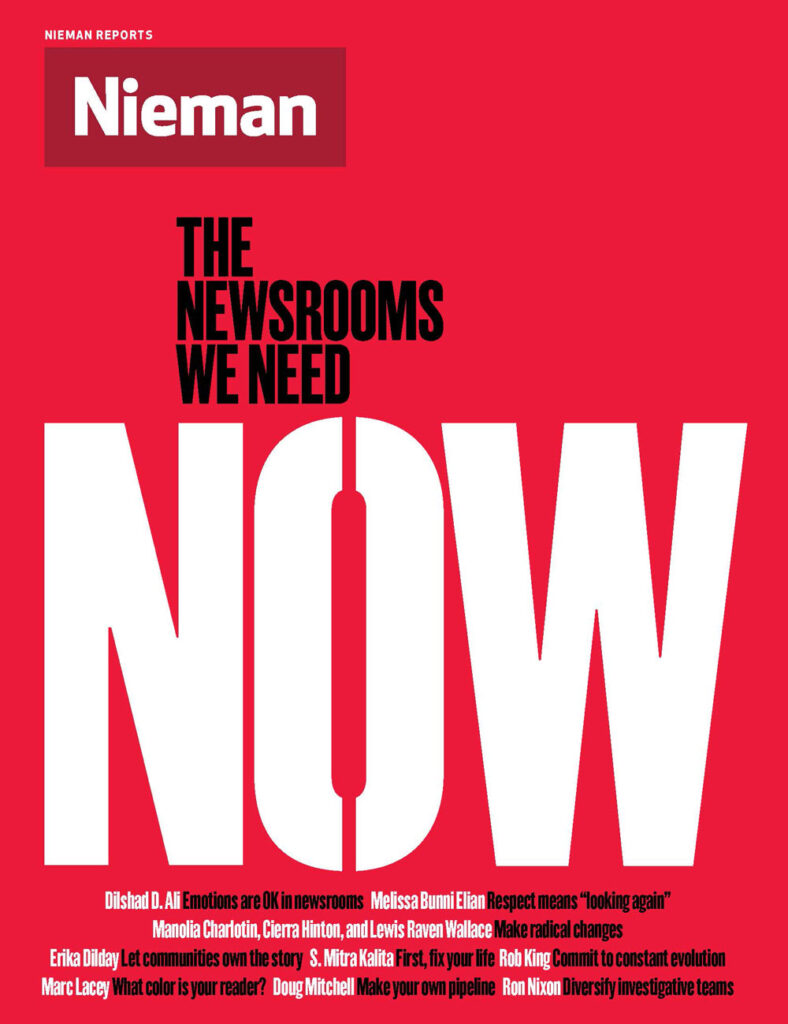Every journalist needs to imagine a reader, someone to tell the story to. Of course, we all want many, many readers but keeping at least one person in mind during the writing process can help keep engaging prose from veering toward boilerplate.
If you work for a local newspaper, your reader is probably from the city where your publication circulates. If your newspaper is national in scope, your reader could be living in New York or Los Angeles or anywhere in between. Your reader — or listener or viewer — may be professional or working class, worldly or parochial, retired or hipster. As you mull whom you write for, it is worth considering this question:
What is the race of your reader?
For too long, readers in the mainstream media have been presumed to be white. I notice it regularly as I survey the news. White is the norm. And the writer helpfully lets us know when someone or something strays from that norm. The writer points out that the mayor is Black. But the city councilman’s race is left unstated two paragraphs later. A neighborhood is described as predominantly Hispanic but another area has no racial identifier at all. Someone is described as being classically beautiful or having all-American looks. Hmm.
With all the attention being paid to structural racism and anti-racism these days, let me say that what I’m describing I don’t consider to be racism at all. Rather, it’s a blind spot that lingers from the days when newsrooms were all white and readerships were presumed to be the same. As newsrooms become more multicultural, I look forward to the day when the subtle hints fade that a particular piece is meant for white readers, caught by the writer, excised by the editor.
As I read an article in The New York Times the other day about the many potential candidates that Governor Gavin Newsom might choose to replace Kamala Harris as a senator in California should she become vice president, I knew race was legitimately going to be a factor and I braced for something to strike me as off. But I couldn’t find anything. One reason was because Mr. Newsom’s race was acknowledged as a factor: “In fact, political strategists say, the choice will be tricky for Mr. Newsom, a white man who would be replacing a female senator who is Black and of Indian and Jamaican descent in a heavily Democratic state with no ethnic majority and innumerable factions.” Often, it is appropriate to acknowledge that whiteness is a factor, however uncomfortable it can make us.
One of my former colleagues used to encourage Times correspondents to write their articles in the same voice they would use at a dinner party full of intellectually curious guests. He meant that we should be engaging and concise in our writing and that we should use language that is both conversational and highbrow. I found that advice useful but I’m going to add an addendum: imagine that your dinner party guests are a diverse lot — which ought to be far more common than it is in America — and that your goal is not to have any of them flinch during the main course as you hold court.
Marc Lacey is the national editor at The New York Times.
The Newsrooms We Need Now
As American society—and American newsrooms—grapple with an unprecedented time in the country’s racial justice movement, Nieman Reports is publishing a series of essays about how journalism should respond to the challenges of the moment, from accelerating journalists of color moving into senior decision-making roles to improving coverage of racism and white supremacy.




